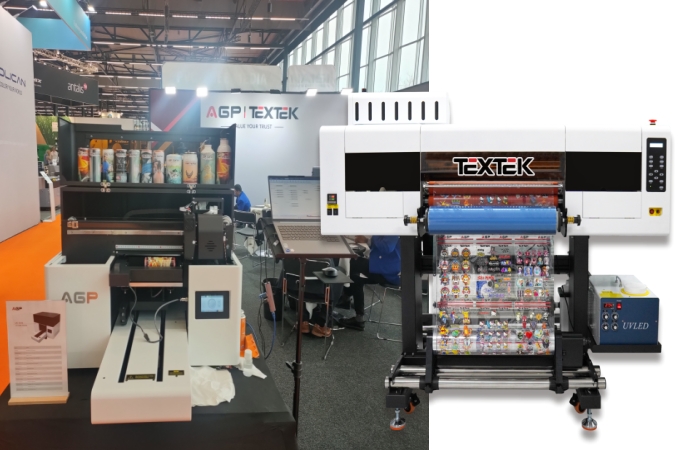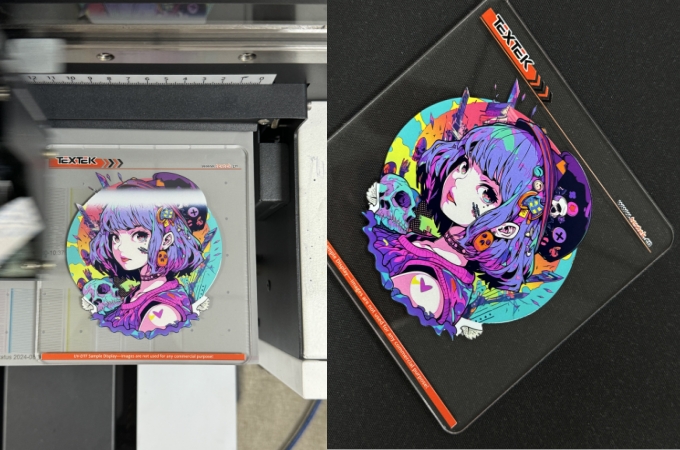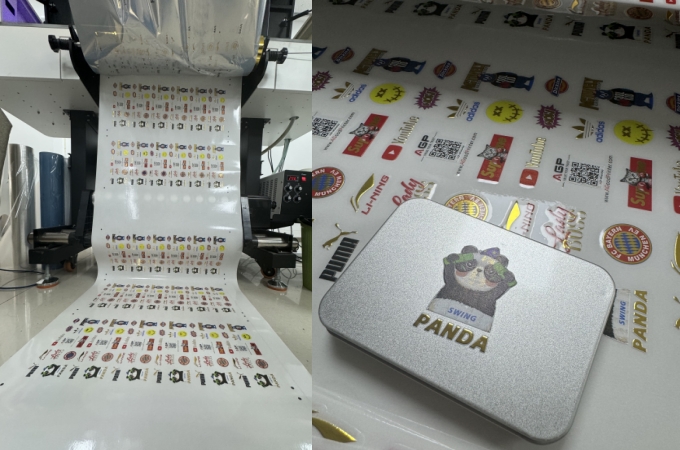11
Sep

UV Direct and UV DTF Printing are becoming increasingly popular for their use and the quality of the prints. Both work with ultraviolet (UV) curing technology. However, there is quite a difference in their applications and processes.
UV Direct Printing is printing directly on an object suitable for flat and hard materials. On the other hand, UV DTF (direct-to-film) Printing is the use of transfer paper. This method is mainly useful for curved surfaces.
It is therefore important for decision-makers to have an understanding of these differences. This could help you learn what suits you best so you can select the most appropriate method for your projects.
Let's check out the five differences between the two printing methods.
In this method, the ink is directly deposited on the material which is also called the substrate. It is then immediately cured with the help of UV light. The UV light cures the ink. This means that the ink attaches itself to the surface very well. This technique of printing reduces the time taken by the prints to dry. It also produces clear and high-quality prints with adhesion to the substrate.
This involves developing an image in the transfer paper using UV-curable inks. The image is first printed on transfer paper. It is then developed in reverse order and then an adhesive is applied to the film used in the process. The image is then developed and fixed before being transferred to the substrate. It can be glass, metal, or plastic among others. The UV light solidifies the ink on the film. The adhesive affixes the print onto the surface.
It is particularly suitable for flat rigid material. That is because the printhead requires a flat and laminar surface for the distribution of the ink. Some of the frequently used materials for this method include timber and acrylic. You can also use glass, metal, and plastics. UV direct printing is most suitable for signs and banners. It is also suitable for t-shirts and other related products. Any other flat items that do not require cutting or sewing.

UV DTF is much more flexible than other forms of printing. The image is first printed on a film and then transferred to the substrate. It is especially effective on rounded or irregular areas. This includes bottles, mugs, helmets, shoes, and more.
In this printing method, the ink dries under the influence of ultraviolet light directly onto the substrate. It is therefore very resistant to scratching. This is mainly due to the UV curing process that cures the ink within seconds. This leads to a strong bond between the ink and the material. Its print can endure any form of exposure to elements and abrasions. This method is normally applied for outdoor signages and in other areas that require signs that have long-lasting appearance.
The UV DTF print’s durability is based on the adhesive that is used and sticks the print to the substrate. This additional layer may slightly decrease its scratch resistance. That is why it is only recommended on surfaces that aren’t frequently exposed to stress. But it offers good durability, which is good for personal accessories. It is also suitable for products and gifts that do not have to endure tough usage.

UV direct printing is a technique in which the ink is directly sprayed on the surface. Thus, it produces very high image quality with sharpness and brightness. It is ideal for fine details, text, and colors. The ink is applied in the right spot and then set instantly. This is a process that is usually favored when doing business graphics and art prints. With any design that requires a high degree of detail and sharpness.
UV DTF printing also gives good-quality prints. However, the edges of the prints are comparatively softer and less sharp than direct prints. This is because the image is first projected on an intermediary film. This may slightly alter how the ink is deposited on the last layer.
UV direct printing is appropriate to be used on non-textured and slightly textured surfaces. Though it can take several substrates, its applicability is somewhat restricted to a flat object. Also with an object with a uniformly smooth surface. This means that anything irregular or curved should not be used. Otherwise, the final print may appear distorted. It might also not stick to the surface as it should. The method is well-suitable in places like hall signs, flat trims, or billboards. It also suits other items where high-definition prints on a smooth surface are needed.
There is a lot of flexibility with UV DTF printing. It can be applied on any form of surface such as curved, cylindrical, or textured. This makes it ideal for application on products with hard-to-print shapes. This includes sports helmets, tumblers, and phone cases. Moreover, with any other products that cannot be directly printed on. Its prints can be made on numerous types of fabrics and any shape. That is why it is ideal for printing unique products or gifts.
Both UV Direct Printing and UV DTF Printing are innovative technologies. They create value for various types of projects.
UV Direct Printing is best suited to print on a non-curved, hard surface. It can produce high-quality, long-lasting prints. These are perfect for signages, giveaways and intricate designs. It is however not so flexible especially when it comes to printing on curved or irregular surfaces.
With the UV DTF Printing process, it is easier to transfer prints on to a wide range of materials. Especially, to those that have curves or textures. The transfer process does reduce the sharpness of edges by a degree. It has the potential to introduce more variables into even more complex shapes.
Drop us an email and let's make great things happen: info@textek.com
Contact us through WhatsApp and let's talk furthermore: +8619137185989
.jpg)
